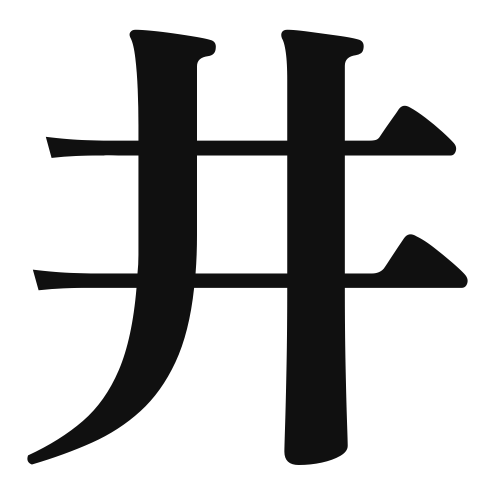1. Overview of Meaning
The kanji “井” (pronounced “i” or “sei”) means “well” or “water well.” It represents a source of water, often used in rural areas for drinking and irrigation.
2. Formation and Radical
Formation of the Kanji: The kanji “井” is a pictogram that visually represents a well. It depicts a square shape with lines inside, symbolizing the structure of a well and the water contained within it.
Radical: The radical for “井” is “水” (water), which is often associated with water-related meanings in other kanji.
3. Examples of Usage
Common Words and Phrases:
- 井戸 (いど, ido) – “well”
- 井上 (いのうえ, Inoue) – a common Japanese surname meaning “above the well”
Example Sentences in Daily Conversation:
- 「この村には古い井戸があります。」(Kono mura ni wa furui ido ga arimasu.) – “There is an old well in this village.”
- 「井戸の水はとても冷たいです。」(Ido no mizu wa totemo tsumetai desu.) – “The water from the well is very cold.”
4. Synonyms and Antonyms
Similar Kanji:
- 泉 (いずみ, izumi) – “spring” or “fountain,” which refers to a natural source of water, often flowing.
- 池 (いけ, ike) – “pond,” which is a larger body of water but does not imply the same structure as a well.
Antonyms:
- 干 (ひ, hi) – “dry,” which represents the absence of water.
5. Cultural and Historical Background
Relation to Japanese Culture: The concept of a well is significant in Japanese culture, often symbolizing life and sustenance. Wells have historically been vital for communities, especially in rural areas.
Proverbs and Idioms:
- 「井の中の蛙大海を知らず」(I no naka no kawazu taikai o shirazu) – “A frog in a well does not know the ocean,” meaning someone with a limited perspective.
